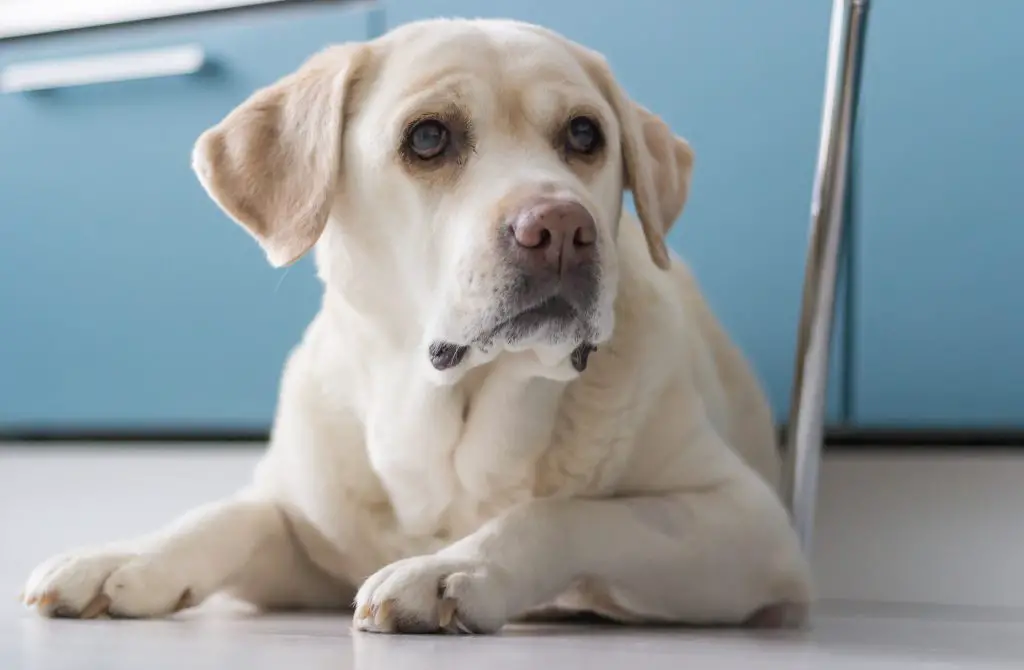It is a fact that many newbie dog owners only consider the novelty of having a pet without considering the impact it would have on their daily lives. This is especially true for a highly sociable dog like the Labrador Retriever.
Despite its persisting popularity, there is the question of whether a Lab can be left alone for long hours, especially if the owner has to go to work.
However, this is a question which cannot be simply answered since no two Labs are the same, with one being able to fend for itself at home without any trouble or the other goes on a barking or destructive spree.
Important Considerations when Leaving a Lab Alone
There are important considerations if you find that you will need to leave your Lab alone at home for long hours.
For Labs to be able to be left at home, they should’ve undergone socialization and crate training. Socialization makes them able to adapt and relate with other pets in the home or neighborhood, especially if you will allow them to go out of your house while you’re gone.
Crate training gives them a safety/relaxation place in your home so that they feel less anxious while you’re gone. These forms of training help to alleviate separation anxiety, which your dog may experience while you’re gone.
Toilet breaks are also an important consideration. Install a doggy door so they can get out into the garden to do their business. Or you may need to hire a dog sitter. Dog sitters can also take your Lab out for walks to release pent up energies.
What Happens To Labs When You Leave Them Alone Too Long
There are three possible behaviors that you should expect from your Lab if you leave them alone at home for long periods of time.
1) Separation anxiety
Because they are highly social dogs, Labs have difficulty to dealing with the absence of their owners. Some stress signs that indicate separation anxiety include persistent whining, barking, or howling, restless pacing, chewing, drooling, digging, peeing or pooping anywhere inside the house, or escape attempts.
2) Destructive behavior
Lonely Labs tend to build up excess energy, which ultimately requires release. They may do so through destructive behaviors, including chewing and ripping furniture and personal items such as clothes and shoes.
3) Nighttime restlessness
Because they are unable to release their energies during the day, you may notice your Lab to be very restless at night. Some dogs may even indulge in frenetic zoomies inside your home.
How Long Should Labs Be Left Alone
Labrador puppies need constant companionship and supervision. Such supervision involves putting in the time for socialization and crate training so that they will become less problematic when they get older. Because of their age, they require more toilet breaks.
For puppies age eight to 10 weeks, they can only be left alone for one hour. Puppies at 2-3 months can be left alone for two hours. At age three to four months, it will be three hours. Then at four to six months, you can leave them at home for four hours.
From adolescence (estimated at six to eight months) to the adult stage (18-24 months), you can leave your puppy at a maximum of four hours because they already have some bladder control.
Senior dogs require attention and supervision that is similar to puppies because of their advanced age and the risk of suffering hip dysplasia and other bone and joint problems.
What To Do If You Need to Leave Your Lab at Home
If your work requires you to leave your Lab at home for the whole day, here are some steps you can take
1) Give your Lab a good hour-long walk before going to work. You can also play fetch with them using a ball or frisbee. This will enable them to release energy and tire them out, so that hopefully they will be resting or sleeping for most of the day.
2) Get the services of a dog sitter/dog walker or doggy daycare center. These men and women can look after your dog for a couple of hours while you’re at work. They can also take them out on walks for exercise and toilet breaks.
While doggy daycare centers are the more expensive option, you are guaranteed better care for your Lab, plus great facilities for training and play.
3) In the absence of a dog sitter, you can ask a relative or friend to check on your Lab. They don’t have to stay with your dog the whole day. 15 to 30 minutes of interaction and play with your Lab will keep them happy and entertained.
4) If your workplace is not too far, you can commute or drive back home to check on your Lab during your lunch break. You can take your dog out for a walk and toilet break or a quick game of fetch.
5) Set up toys and gadgets to keep your dog amused throughout the day. Leave your dog’s favorite toys inside its crate to cuddle up with while you’re gone. Many Lab owners have grown to love Furbo, a device linked to your phone which allows you to see and talk to your dog. It even lets you eject treats from inside the device.
Generally speaking, all dogs – not just Labradors – are not advised to be left home alone for too long, even if they are properly trained. Make sure to have the necessary arrangements in place so that your dog will have company while you’re out of the house.


